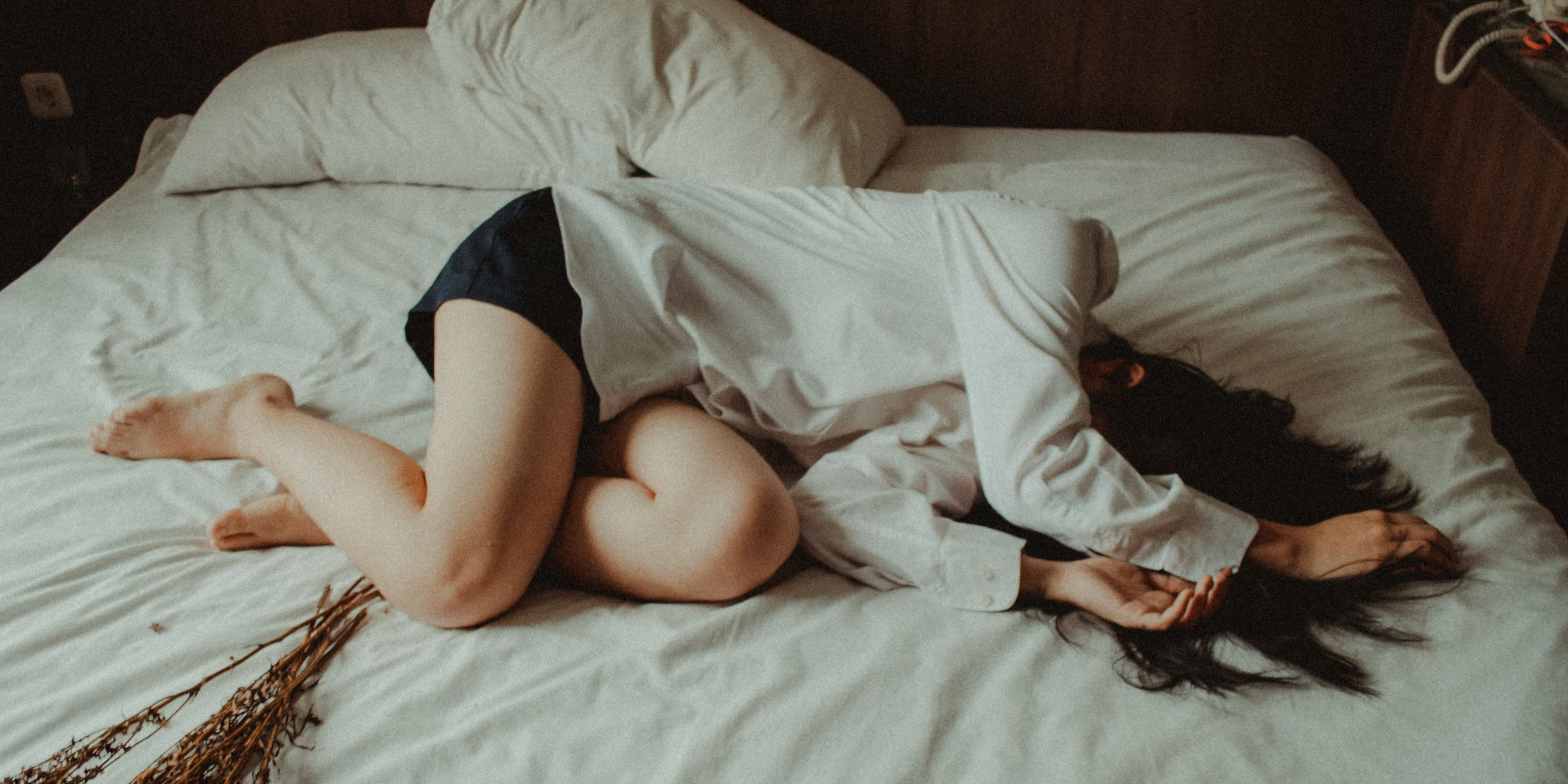Postpartum Bleeding: What Is Best To Wear After Birth?

There are many moments of joy and relief during pregnancy and birth, but there's also a lot of blood. But what does postpartum bleeding actually look like? How long does it last? Read on for answers to your top questions about postpartum bleeding (and what to wear when you start experiencing it).
What is postpartum bleeding?
Lochia, also known as postpartum bleeding, is a normal discharge of blood, mucus, and uterine tissue, that your uterus sheds after childbirth. It can be a lot or a little, depending on how much your body needs to heal itself after labour and delivery. Postpartum bleeding can be red, brown, or pink in colour, can be heavy or light, and can last between two to six weeks.
Postpartum bleeding occurs after women have given birth vaginally or by cesarean section. However, it can also happen if you've had a miscarriage or an abortion (although this is rare).
What is normal postpartum bleeding?
Normal postpartum bleeding is bright red and not associated with pain. You may experience heavy bleeding, light bleeding or spotting that can last up to 6 weeks after giving birth. This can be a scary time for new mums, but it's important to know that this type of bleeding is normal and typically happens in all women who have given birth.
Normal postpartum bleeding usually starts like a heavy period, with the flow gradually easing as the weeks pass. Most women find the first one to two weeks the heaviest, with the bleeding starting to ease up after four weeks. If you are breastfeeding, you might notice your bleeding is heavier, as well as if you are exercising or doing any other physical activity. Most doctors will recommend you rest as much as you can in the first few weeks after giving birth.
What is abnormal postpartum bleeding?
Your doctor will talk to you about what to expect after giving birth, so you know what to look out for when you are recovering from giving birth. Postpartum bleeding can be inconvenient and uncomfortable, but it shouldn't be painful. Keep an eye on whether you experience any of the following:
- Excessive pain
- Sudden increase in bleeding / excessive bleeding
- Dizziness
- High temperature
If you experience any of the above symptoms, it is a good idea to speak with your doctor.
What are the postpartum bleeding stages?
Bleeding often lasts for around four to six weeks, and the bleeding usually happens in stages.
Here’s what you can expect:
- Day 1: Fresh red to brownish blood. A heavy flow, with one or two clots or several smaller ones.
- Day 2 to 6: Darker brown or pinkish red blood. Moderate flow with smaller blood clots.
- Day 7 to 10: Darker brown or pinkish red blood. Flow is variable, but becoming lighter.
- Days 11 to 14: Darker brown or pinkish red blood. Flow continues to get lighter.
- Week 3 to 4: Paler, possibly a creamy white blood loss. Light flow.
- Week 5 to 6: Brown, pinkish red, or creamy yellow stains, possibly for several weeks, and possibly only on some days.
How to manage postpartum bleeding
If you're experiencing postpartum bleeding and have no idea what to do, there are some steps that can help you manage the situation.
- Medication to help with contractions: If you've had trouble getting rid of your placenta or if you're having painful cramps from the separation, your doctor may prescribe medication to help speed up the process.
- Massages to ease cramping: A massage can be a great way to relax tense muscles and soothe sore spots after birth--and it's especially helpful if those muscles are in need of some serious TLC after all that pushing!
- Rest up: If you're experiencing postpartum bleeding and cramping, it's important to get plenty of rest during your postpartum recovery. Make sure to get a good amount of sleep and try to relax by doing things like soaking in a bath, meditating or listening to music.
- Absorbent underwear: You'll want something absorbent enough that will catch any blood as it exits your body, but also comfortable enough so that they don't cause irritation or discomfort while they're on (and they shouldn't be too bulky either). If possible, try out different styles before settling on one type; this way you'll know which ones work best for you.
What is postpartum underwear?
Postpartum underwear looks and feels like regular underwear, but can absorb any leaks, help protect your clothing, and keep you feeling comfortable while you are postpartum bleeding. The underwear features an absorbent and leak-proof built-in gusset that soaks up blood and prevents stains. They can be worn for up to 12 hours, and then simply washed and reused for the duration of your postpartum bleeding. You can look at different period underwear options for postpartum here.
How to choose the right postpartum underwear
You'll need to make sure you choose the right postpartum pants for your body. Here are some things to think about:
- Fit well: The first thing you want to do is buy underwear that fits properly and comfortably. You'll want something that will not ride up or down, as this can be uncomfortable and cause chafing. If they don't fit well, they won't be comfortable — and since we all know how much time we spend with our pants on, this could lead to problems! Our High Waist period underwear is a perfect pick for underwear that offers full coverage and comfort.
- Breathable materials: Look for underwear made from comfortable and breathable materials. Natural materials like Organic Cotton and Modal are better than synthetic materials, as they will feel better against sensitive skin. Our Classic Range of period underwear is made from super-soft materials, and our Essential Range is made from Organic Cotton — both perfect for postpartum bleeding!
- Leak-proof: This one is a must! Postpartum bleeding can be unpredictable and last for a while, so you need to trust the underwear you're wearing. Our period pants come in absorbencies from super light to super heavy, so you'll find something to suit you. You can even build a set to mix and match different styles!
If you're looking for ideas on what to wear during postpartum, we hope this article has helped you. We know that it can be difficult to find the right pair of pants after giving birth, but we want to reassure you that there are plenty of options out there. You don't need to wear something restrictive or uncomfortable, instead, choose something that makes sense for your body type and size, so you feel comfortable and confident in them!
RELATED POSTS



